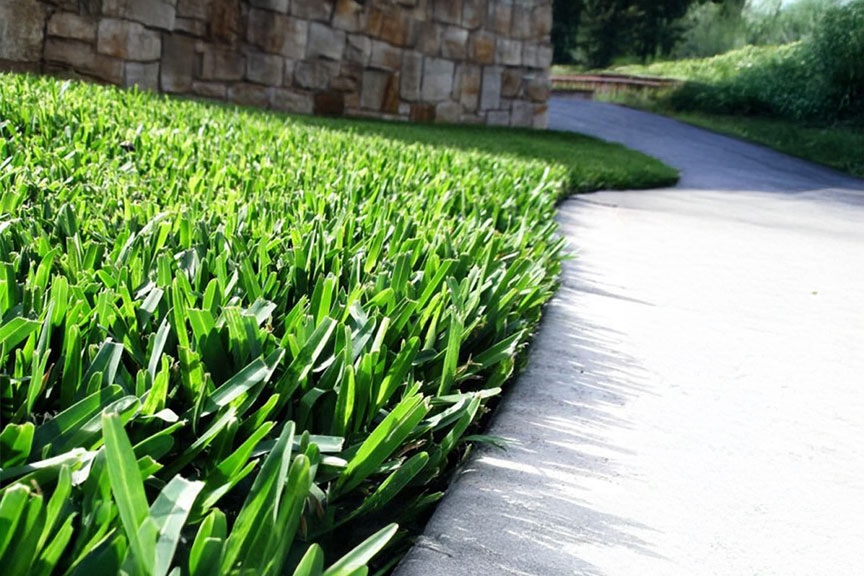
Home » Get to Know the Nutrients Your Lawn Needs
Get one of our team members to give you a call to discuss your project!

You love the look and feel of a lush, green lawn. You consulted turf experts to choose a grass variety that would grow well in Sydney’s soil and weather conditions. You follow their recommendations for mowing, watering, weeding and fertilising. As a result, your lawn stays plush and hardy year round.
In most places, that is. You’ve noticed a few patches of yellow grass lately, and the vibrant green you used to see now appears a little drab compared to your neighbour’s yard. It’s time to fertilise again, but you want the formula you spread to correct the problems you see as well as provide nutrients. Get to know the common nutrients in lawn fertiliser so you can select the best fertiliser for your grass.
If your grass appears yellow or light green, it probably lacks nitrogen. Grass draws some nitrogen from soil, but it grows greener and hardier with supplemental nitrogen from fertiliser. Grass blades need ample nitrogen to produce proteins and enzymes for growth.
Nitrogen is also a key component in chlorophyll, the plant cell powerhouse that converts sunlight into plant food. Chlorophyll also contain the pigments that make grass green. More chlorophyll means a darker green grass colour.
The element phosphorus supports grass blades at the root. Phosphorus encourages your lawn’s roots to form a symbiotic relationship with helpful, soil-dwelling bacteria. The bacteria ensure that soil found in nitrogen becomes useable for plants, and phosphorus helps the grass blades soak in that available nitrogen.
Because phosphorus concentrates in grass’s roots, it helps grass regrow soon after you mow. Newer lawns also rely on phosphorus to develop a strong root system that discourages weeds from taking root.
Many essential plant cell processes require potassium. This element allows grass to retain water it draws from soil, which keeps grass feeling soft. Potassium also has a direct effect on your lawn’s hardiness. As long as consumes has abundant potassium, grass stays green and fertile even in dry or hot conditions.
Grass that eventually turns brown likely suffers from insufficient potassium. However, it’s hard to distinguish a potassium deficiency from a nitrogen deficiency, so most fertilisers contain both nutrients. A lawn overrun with weeds may also have too little of this essential element.
This mineral helps the newest portions of grass, such as root tips and blade tops, function just right. It also encourages plant cell walls to hold their shape, creating the grass’s texture. If grass can’t get enough calcium, the soil likely has a poor pH and an overabundance of other minerals (iron, manganese and aluminium).
Grass needs the elements like manganese, iron and zinc, but only in tiny amounts. Your lawn uses them to catalyse chemical reactions that allow growth. Ask a lawn care expert to conduct a plant tissue test if you suspect your grass has an imbalance of these trace elements.
Now that you know what’s in your fertiliser, it’s time to spread it over your lawn. Consult a lawn care expert.




A View Turf